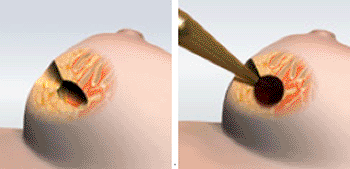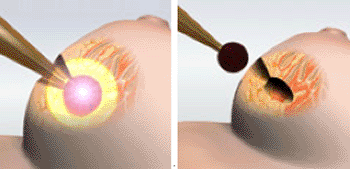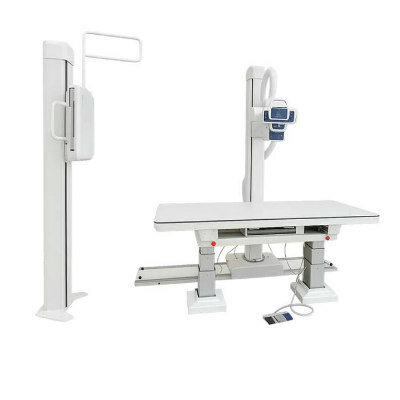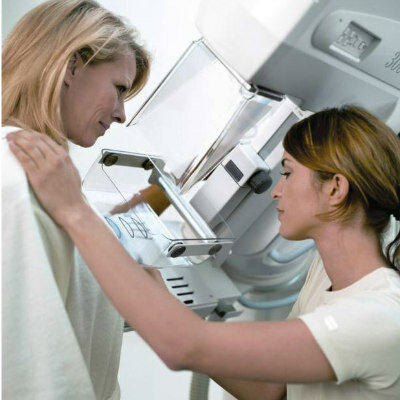Results for Intraoperative Radiotherapy for Breast Cancer Similar to Conventional Radiotherapy
By MedImaging International staff writers
Posted on 23 Dec 2013
A new clinical trial for breast cancer revealed that a single fraction of targeted intraoperative radiotherapy (TARGIT) delivered with the Zeiss Intrabeam at time of lumpectomy is as good as conventional external beam radiation (EBRT) delivered over three to six weeks after breast conserving surgery for a select group of patients.Posted on 23 Dec 2013
The study’s findings were published December 3, 2013, in the Lancet. “The most important benefit of TARGIT for a woman with breast cancer is that it allows her to complete her entire local treatment at the time of her operation, with lower toxicity to the breast, the heart, and other organs. Our research supports the use of TARGIT concurrent with lumpectomy, provided patients are selected carefully, and should allow patients and their clinicians to make a more informed choice about individualizing their treatment, saving time, money, breasts, and lives,” said Prof. Jayant S. Vaidya, MD, PhD, FRCS, a consultant surgeon at the Whittington, Royal Free and University College London Hospitals (UK), and part of the international TARGIT investigators group.
Since 1998, the international TARGIT research group has investigated whether radiotherapy targeted to the tumor bed at the time of surgery can reduce the risk of recurrence in early breast cancer as effectively as the traditional three to six week EBRT. Typically, whole-breast EBRT is given after breast-conserving surgery (lumpectomy) to reduce the risk of recurrence of cancer in the breast and of breast cancer mortality. EBRT typically is administered over a period of three to six weeks requiring patients to receive treatment at radiotherapy centers for 20–30 days. In some instances, women suitable for breast conserving surgery, but living far from a radiotherapy center and unable to attend daily postsurgical treatments may even undergo mastectomy as an option.
In the TARGIT approach, during surgery after removal of the tumor, the affected tissue in the tumor bed is irradiated from within the breast using the Zeiss Intrabeam. The TARGIT study results show that targeted intraoperative radiotherapy delivered with Zeiss Intrabeam (Oberkochen, Germany) can reduce the risk of recurrence of the cancer as effectively as a traditional three- to six-week course of whole breast irradiation in selected women with invasive ductal carcinoma.
The TARGIT-A trial has been to date the largest multicenter randomized clinical trial for intraoperative radiotherapy (IORT) in the field of partial breast irradiation, with 3,451 patients in 33 international centers from the United States, Europe, and Australia. The TARGIT-A trial followed an individualized risk-adapted strategy, meaning, that patients who had received TARGIT at the time of surgery showed in the final pathology additional unanticipated risk factors, received supplemental EBRT, which occurred for about 15% of the patients.
The five-year results for local recurrence and the first analysis of overall survival of the TARGIT-A trial have now been reported. Comparing TARGIT with EBRT the difference in five-year local recurrence between the two treatments was less than 2.5% and therefore considered “non-inferior” to standard EBRT (daily doses for three to six weeks) in treating the cancer. Overall mortality was 3.9% with TARGIT and 5.3% with EBRT, due to fewer deaths from cardiovascular causes and other cancers.
Based on statistical comparison of breast cancer recurrence, number of deaths and side effects of TARGIT versus EBRT the authors concluded, “TARGIT concurrent with lumpectomy within a risk-adapted approach should be considered as an option for eligible patients with breast cancer carefully selected as per the TARGIT-A trial protocol.”
“We commend the international TARGIT group pioneered by Prof. Jayant Vaidya and Prof. Michael Baum for this outstanding research on this new treatment option that can benefit many breast cancer patients. The TARGIT group’s research will further enhance adoption by radiation oncologists and breast surgeons worldwide and will broaden the application of our Zeiss Intrabeam for this new option in the fight against cancer,” stated Dr. Ludwin Monz, president and CEO of Carl Zeiss Meditec, AG.
Related Links:
University College London Hospitals
Carl Zeiss
















